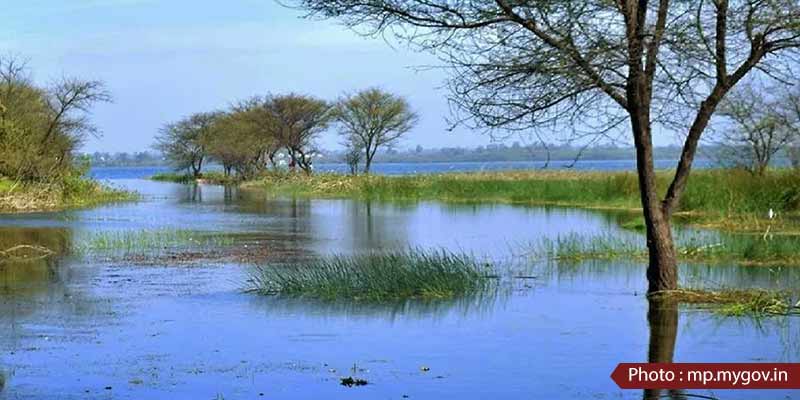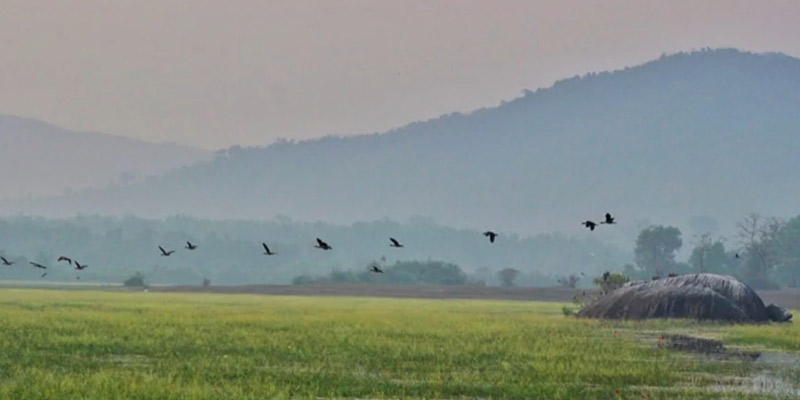- India
- Sep 15
NGT bans cruise, motor boats in Bhoj Wetland
• The National Green Tribunal (NGT) ordered the Madhya Pradesh government to stop the operation of cruise vessels as well as other motor-propelled boats in Bhoj Wetland.
• A complaint was filed on serious damage and deterioration being caused to Bhopal Lake, commonly as ‘Bhoj Wetland’ comprising ‘Upper Lake’ and ‘Lower Lake’ and other water bodies due to operation of motorised boats and cruise boats.
• Bhoj Wetland is a recognised Ramsar Site since 2002.
• Upper Lake is an important source of potable water to the city, spread over about 31 sqkm and fulfills the need of drinking water of people of Bhopal city.
• The NGT also directed the Union ministry of environment and Central Pollution Control Board (CPCB) to formulate a standard operating procedure for motorised boats in water bodies/lakes (not designated as wetlands), if the motors are fitted with four stroke outboard engines or operated by green fuel and do not cause any damage to water and air ecology and environment.
Bhoj Wetland
• Bhoj Wetland got the status of Wetland of International importance under Ramsar Convention in August 2002. It comprises two water bodies — Upper Lake and Lower Lake.
• With regard to Bhoj Taal (Upper Lake), as per old records, the Lake was made by Paramara Raja Bhoj, Ruler of Malwa. The Lake is surrounded by Van Vihar National Park on the south, agricultural fields on the west and human settlement on the east and north.
• By making an earthen dam across Kolans River (tributary of Halali river), the lake was built. Upper Lake drains into Kaliasot River. Another dam called Bhadbhada was constructed in 1965 on Upper Lake to control outflow of Kaliasot river.
• Lower Lake is said to have been built by Nawab Chhote Khan in 1794 to beautify the city. It drains into Halali River via lower reach of Kolans River. It has a catchment area of about 9.6 sqkm.
• A ‘Pul Pukhta’ or Lower Lake Bridge separates Lower Lake from Upper Lake.
• The lakes are very rich in biodiversity, particularly for macrophytes, phytoplankton, zooplankton, both natural and cultured fish species, both resident and migratory birds, insects, and reptiles and amphibians.
• More than 2,500 migratory birds across the world used to come regularly to this Wetland for breeding and dispersal of seeds, leading to maintenance of biodiversity along their routes.
What is the Ramsar Convention?
• The Ramsar Convention is an international treaty signed by 172 countries to protect wetlands. It is named after the city in Iran where it was signed, and it began with 18 countries in 1971.
• The convention is one of the oldest inter-governmental accords for preserving the ecological character of wetlands. Also known as the Convention on Wetlands, it aims to develop a global network of wetlands for the conservation of biological diversity and for sustaining human life.
• It is one of the largest international agreements, after the Convention on Biological Diversity (CBD, 196 countries) and the UN climate agreement (UNFCCC, 197 countries).
• The Ramsar List is the world’s largest network of protected areas.
• There are over 2,400 Ramsar Sites around the world. The first Site was the Cobourg Peninsula in Australia, designated in 1974. The largest Sites are Rio Negro in Brazil (120,000 sq km), and Ngiri-Tumba-Maindombe in the Democratic Republic of Congo and Queen Maud Gulf in Canada. These Sites each cover over 60,000 sq km.
• The countries with the most Sites are the United Kingdom with 175 and Mexico with 142. Bolivia has the largest area with 148,000 square km under the Convention protection.
• In India, 75 wetlands covering an area of 1,326,677 hectares have been designated as Ramsar Sites of International Importance from India.
• The signatory countries promise to make inventories of their Ramsar Sites and to develop management plans. These management plans include the sustainable use of the many other functions of wetlands, such as food production, water storage and recreation.
Additional read:
The vital role of wetlands for people and planet
Wetlands are ecosystems where water is the primary factor controlling the environment and the associated plant and animal life. Wetlands provide a wide range of important resources and ecosystem services such as food, water, fibre, groundwater recharge, water purification, flood moderation, erosion control and climate regulation.
Manorama Yearbook app is now available on Google Play Store and iOS App Store


